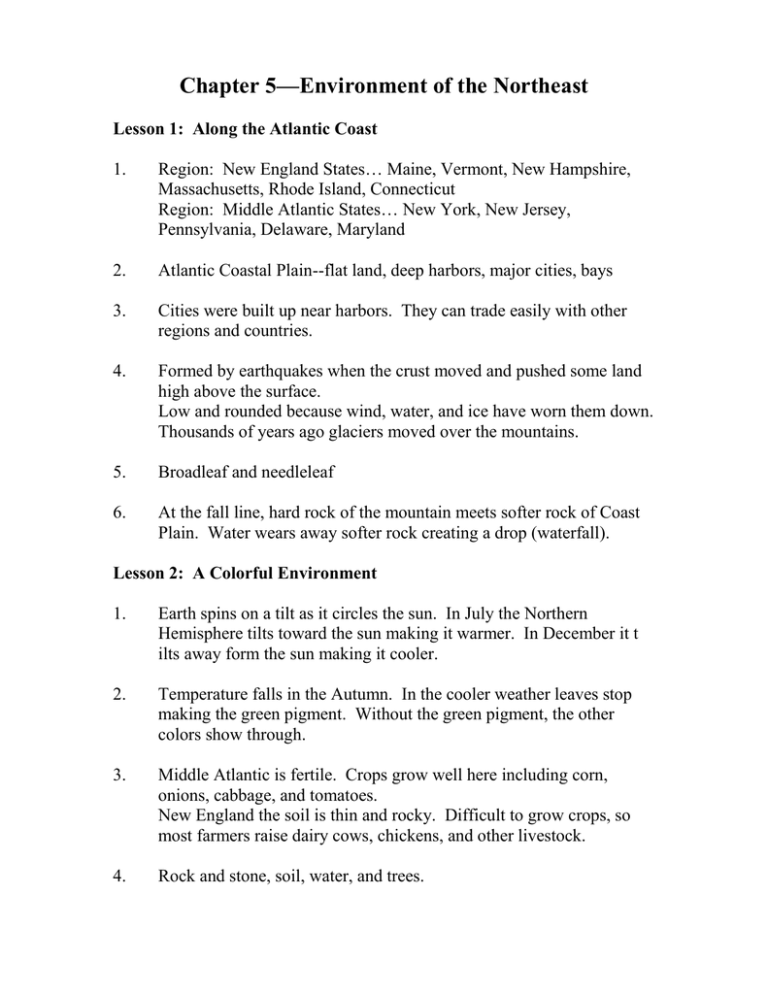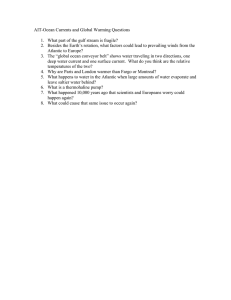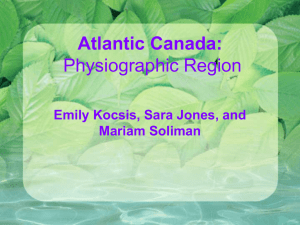Chapter 5—Environment of the Northeast
advertisement

Chapter 5—Environment of the Northeast Lesson 1: Along the Atlantic Coast 1. Region: New England States… Maine, Vermont, New Hampshire, Massachusetts, Rhode Island, Connecticut Region: Middle Atlantic States… New York, New Jersey, Pennsylvania, Delaware, Maryland 2. Atlantic Coastal Plain--flat land, deep harbors, major cities, bays 3. Cities were built up near harbors. They can trade easily with other regions and countries. 4. Formed by earthquakes when the crust moved and pushed some land high above the surface. Low and rounded because wind, water, and ice have worn them down. Thousands of years ago glaciers moved over the mountains. 5. Broadleaf and needleleaf 6. At the fall line, hard rock of the mountain meets softer rock of Coast Plain. Water wears away softer rock creating a drop (waterfall). Lesson 2: A Colorful Environment 1. Earth spins on a tilt as it circles the sun. In July the Northern Hemisphere tilts toward the sun making it warmer. In December it t ilts away form the sun making it cooler. 2. Temperature falls in the Autumn. In the cooler weather leaves stop making the green pigment. Without the green pigment, the other colors show through. 3. Middle Atlantic is fertile. Crops grow well here including corn, onions, cabbage, and tomatoes. New England the soil is thin and rocky. Difficult to grow crops, so most farmers raise dairy cows, chickens, and other livestock. 4. Rock and stone, soil, water, and trees. Lesson 3: 1. A part of a canal is closed off by a gate. The water can be raised or lowered to move the ship to the next part of the canal. 2. A system of canals were dug along the St. Lawrence River to connect the Atlantic Ocean and the Great Lakes. It was paid for by the U.S. and Canada. 3. The Seaway connects northeastern cities such as Buffalo, New York, to cities in Canada like Montreal, Quebec. 4. Highways, bridges, tunnels, buildings, waterways **Plus study vocabulary in your packet.**




